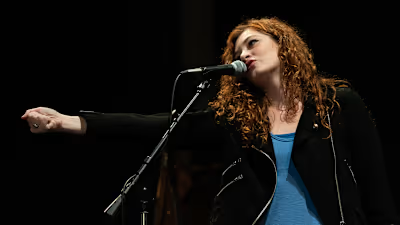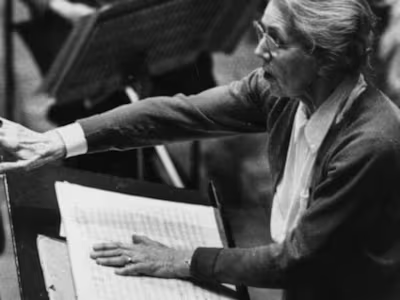Viva La Diva!
It’s no secret that opera would be really boring without its incredibly dynamic women. Why else would we use the word “diva” (Italian for “goddess”) when we describe the lovely ladies of the operatic stage? Here’s a beginner’s guide to some of opera’s most challenging female roles and a unique look at how opera does girl power.
But First: Who’s Who in Women’s Opera?
Soprano: highest female singing voice
Contralto: lowest female singing voice
Mezzo-Soprano: middle singing voice between soprano and contralto
Priestesses & Sorceresses
Let’s raise the curtain on “priestesses and sorceresses.” Whether casting spells or breaking hearts, these characters know how to stir things up on stage.
Norma
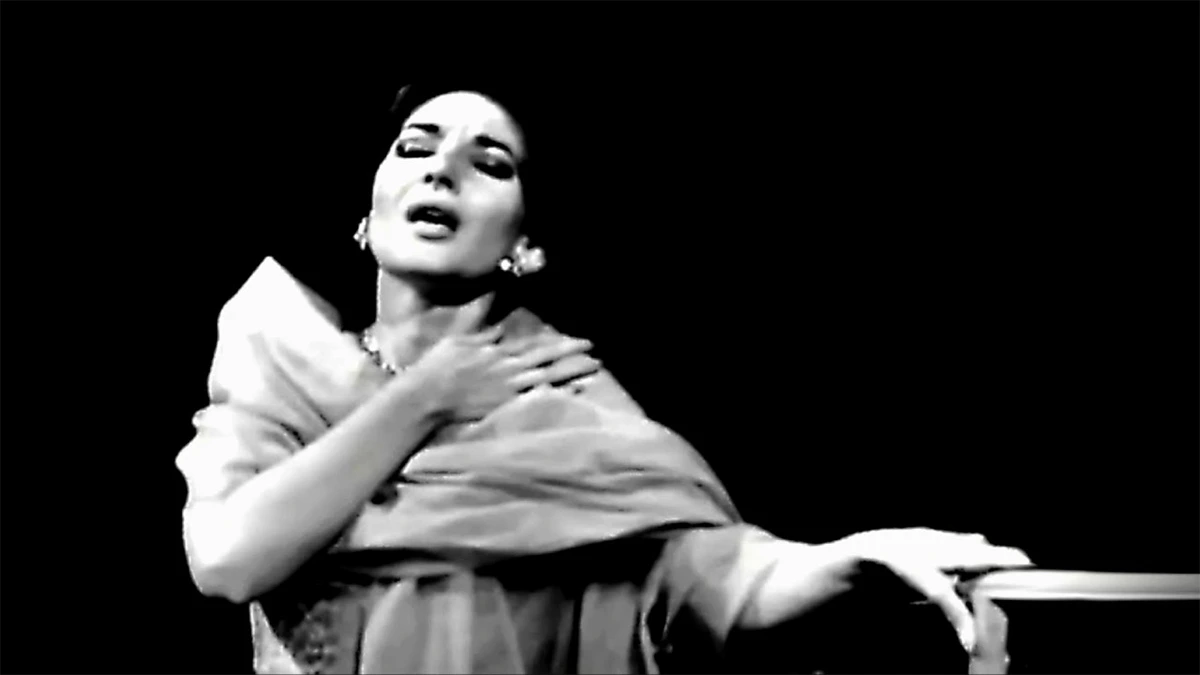
Opera: Norma by Vincenzo Bellini
Voice: Soprano
High priestess Norma is widely regarded as one of the most difficult roles in the soprano repertoire. Hers is a story of unrequited love and political warfare. Although she is the daughter of a Druid leader, she has secretly had two children with the Roman Pollione, a sworn enemy of the Druids and a man who has now rejected her for a younger woman. Naturally, Norma has a lot of emotional issues. All this, coupled with the fact that she is the title character, means she has a lot to sing. A lot. She’s onstage for most of the opera, singing almost non-stop for about two hours.
In addition, the role of Norma is written in what’s known as bel canto (pronounced bel KAN-toh) style (or “beautiful singing” style, a type of operatic music typical of early 19th-century Italian composers), meaning it’s specifically designed to show off the voice. Composers like Bellini loved to have their heroines sing in a variety of ways––fast, slow, loud, soft, low, high, you name it––and Norma is no exception. Many of her arias (featured solo songs) and duets follow a cavatina (kav-ah-TEE-nah) form, a category of song divided into two sections: one sweeping and melodious, the other quick and exciting with lots of runs (several notes sung on a single syllable), and huge leaps from the lower to the upper range. What’s more, her music often has very little (if any) accompaniment, which means the audience is entirely dependent on her voice to tell the story and convey her emotions. Think that sounds hard? Try doing it for hours on end. Norma is a true endurance test for any soprano.
A Norma to Know: Maria Callas
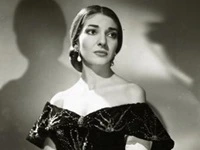
Maria Callas
Affectionately known in operatic circles as “La Divina” (“the divine one”), Greek soprano Maria Callas was perhaps the most famous diva of the 20th century. Her passion for bel canto opera, her famously emotive sound, and her meticulous attention to musical detail made her the ideal Norma. Indeed, Norma became one of her signature roles in the 1950s, and her portrayal still holds a prominent place in operatic history. (Her Tosca and Lucia are also must-listens for any operagoer.)
Isolde

Opera: Tristan und Isolde by Richard Wagner
Voice: Soprano
If Norma is an endurance test, Isolde is more of a marathon. This mythical heroine of Wagner’s groundbreaking 1865 opera requires a very strong and very large (read: loud) voice, not to mention impeccable musicianship. Tristan und Isolde follows the doomed love affair of the Cornish knight Tristan and the Irish princess and magical healer Isolde, who fall instantly in love after drinking a powerful potion. Since this is an opera (and a Wagnerian opera, no less) things get a little complicated. Isolde is forced to marry Tristan’s uncle, King Marke of Cornwall, and the lovers have to meet in secret. It all ends tragically, of course––Tristan is mortally wounded by a member of King Marke’s court and Isolde decides to join her love in death.
Sound heart-wrenching? You should hear the music. Tristan und Isolde is not your standard “boy meets girl, boy and girl stop and sing a duet about it” opera. Instead, Wagner composed it as a seamless mixture of drama and music. There are no specific “songs” and very few pauses for the singers. Consequently, the role of Isolde is marked by long extended phrases that take tons of breath control (picture trying to blow up an entire balloon in one big exhale––it’s a little like that). In addition, the music of Tristan und Isolde rarely settles into a specific key and the soprano singing Isolde must stay on her toes if she wants to keep up with the orchestra, who will often be playing something entirely different from what she’s singing. Oh, and by the way, the orchestra is huge—Wagner was big on volume. Isolde often has to sing in a very high range just so that she can be heard over all the other instruments. Tough stuff, no? And the opera lasts for three (long) acts.
An Isolde to Know: Birgit Nilsson

Maria Callas
Though she began life on a farm in Sweden, this soprano became the greatest Wagnerian prima donna of her age–––which is saying a lot. Historian Rupert Christiansen observes that the “volume and stamina” of her voice, along with her “impressive” acting abilities, helped keep her at the top of her game in an operatic repertoire full of high-stakes drama and even higher notes. The incredible strength of her voice also allowed her to excel in such difficult roles as Strauss’ Elektra and Salome.
Ulrica

Opera: Un Ballo in Maschera by Giuseppe Verdi Voice: Contralto (or Mezzo-Soprano)
Small role––huge impact. Ulrica, the sorceress at the heart of Verdi’s work, makes more out of her one scene than most characters do in an entire opera. Her predictions set in motion a course of events that spell disaster for the three protagonists and without her, there’s no drama. Ulrica’s single aria, “Re dell’abisso, affrettati,” is also one heck of a mood-setter; her deep and dramatic melody, combined with the occasional leap from low note to high note (or vice versa), gives the audience the sense that there is dark magic at work and that spirits are being conjured up from the beyond.
Setting the atmosphere is the least of Ulrica’s trouble, however. Once her aria is out of the way, she then has a lot to do in a short amount of time––moving from one musical feature to another as she foretells the death of the hero. She sings some recitative (short phrases designed to mimic speech), and then lends her voice to two separate ensemble numbers where she occasionally has to sing off the beat, harmonize with the other female soloists, or function as a descant (a higher-pitched melody that soars over a group of other singers). That’s a huge responsibility for just a few minutes’ worth of singing.
An Ulrica to Know: Marian Anderson

Maria Callas
Most famous for making history on the steps of the Lincoln Memorial in 1939 at a concert protesting racial discrimination, African American contralto Marian Anderson also broke barriers as the first black soloist at New York’s Metropolitan Opera in 1955, playing Ulrica. This was a risky move for Anderson, who was known throughout the world as a concert artist and had never sung an operatic role. Her rich tone, beautiful high notes, and sense of musical phrasing fit the part perfectly, however––so much so, that she was asked to play the part again the next season.
Gypsies & Free Spirits
Passionate, exciting, and occasionally misguided, these ladies aren’t your typical romantic heroines.
Violetta

Opera: La Traviata by Giuseppe Verdi
Voice: Soprano
Verdi’s Violetta, the seemingly carefree Parisian party girl with a heart of gold, is an extreme lesson in vocal technique. World-famous soprano Renée Fleming says of Violetta that the part “is generally acknowledged to require almost three separate voices,” or three vocal specialties, which under normal musical circumstances would require three different sopranos to achieve. Anyone who sings Violetta must possess the agility of a coloratura (kuhl-er-ah-TOOR-ah) soprano (a vocal category that requires speed and flexibility), the strength of a dramatic soprano, and the soaring high notes of a lighter lyric soprano. It’s like a musical personality disorder. For example, her Act 1 bel canto aria, “Ah! Fors’è lui… Sempre libera,” is a mini-opera in and of itself––a seven minute scene that moves from a soft bittersweet melody to an exhilarating gallop of a song that requires several runs and takes Violetta up to the vocal stratosphere.
As if this weren’t enough, Violetta is one of the greatest dramatic roles in all of opera. Her character, based on the heroine of Dumas’ La Dame aux Camélias, is the ultimate tragic leading lady––finding true love later in life only to lose it due to jealousy and misunderstanding, then regaining it only to lose it again as she dies of a terrible illness. Serious acting chops are, therefore, a must for any Violetta. She can’t just thrill her audience with the beauty of her singing; she has to make them cry while she’s doing it. If you plan to see La Traviata, start practicing your standing ovation. Violetta more than deserves it.
A Violetta to Know: Renée Fleming
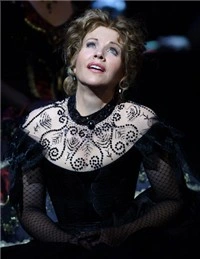
Maria Callas
American vocalist Renée Fleming is one of today’s most recognizable operatic personalities, and her velvety soprano can be heard on stage, in film, and on the occasional pop recording. She approached Violetta relatively late in her career, recognizing that the “extraordinarily demanding” role would require years of experience (she even canceled her first scheduled performance of La Traviata in 1998). The extra practice paid off, though, and Fleming’s Violetta has been in high demand in both Europe and the United States since her debut in the role in 2003.
Dalila
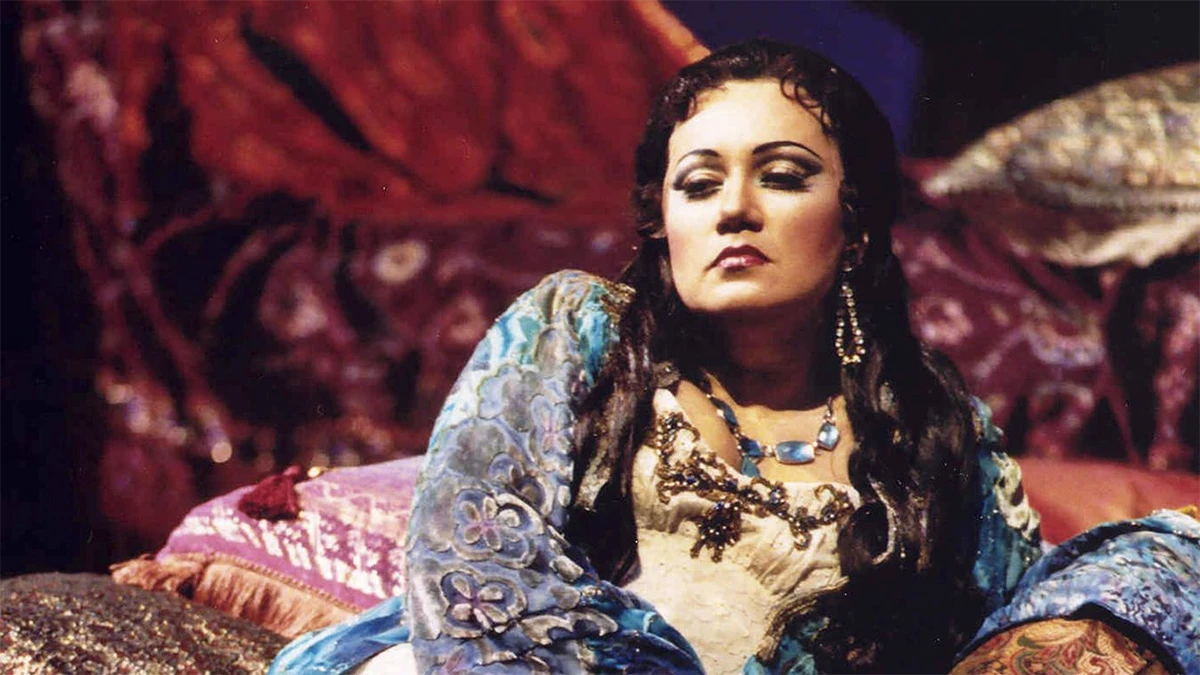
Opera: Samson et Dalila by Camille Saint-Saëns Voice: Mezzo-Soprano (or Contralto)
Saint-Saëns’ Dalila is proof that women don’t always have to sing high to sound powerful. This biblical temptress, who famously tricks a Hebrew warrior into relinquishing all of his love and his superhuman strength for her, tends to sing in glorious “chest tones” (the operatic equivalent of a Broadway belt) that are as thrilling as they are unusual. Whenever she has something important to sing, she sings it in a lower register. This is no small feat considering lower notes are naturally harder for the ear to pick up, especially with an entire orchestra playing. Dalila is also the only female role in the opera, so she doesn’t get much rest. Oh, and her three big arias are some of the most famous music in all of opera. No pressure there.
Dalila isn’t just about low notes, however. If only she were that simple. Instead, she has to constantly change her musical style, adapting her voice to the shifts in her personality. For example, when Dalila sings directly to Samson, she sings in a much higher and sweeter tone with fluid melodies––a clue to the audience she’s being extra flirtatious and deceptive. Yet when she’s alone, her music moves along rapidly and she sings in short, fiery outbursts that emphasize her actual hatred of Samson and her desire to destroy him. Have you ever tried to sing through a mood swing? It isn’t easy.
A Dalila to Know: Olga Borodina
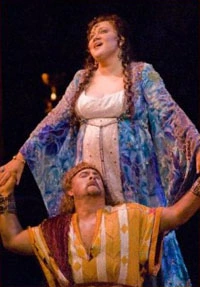
Maria Callas
Deep-voiced mezzo-soprano Olga Borodina’s first performance as Dalila in the early 1990s helped catapult her to international fame. The Russian singer boasts both an impressive “chest” voice in her lower register and thrilling high notes in her upper register––a rare combination, which she uses to her complete advantage when singing Dalila. In addition, her exciting portrayals of dramatic mezzo roles such as those of Verdi, Mussorgsky, and Bizet can be heard in contemporary opera houses around the world.
Carmen

Opera: Carmen by Georges Bizet
Voice: Mezzo-Soprano
Beautiful, seductive, and fiercely independent, Carmen isn’t just a character in an opera, she’s a cultural icon and the most famous mezzo-soprano role. This Spanish gypsy (the opera is in French but takes place in Spain, go figure), who makes a career out of falling in and out of love and refuses to let herself be tied down, is a definite departure from the typical long-suffering heroine usually associated with opera. Much of her behavior—she spends her time with thieves and thinks nothing of asking one of her boyfriends to leave the army––is shocking even by today’s standards. Whoever plays her needs to display a lot of confidence (she’s a gorgeous girl and she knows it) and a lot of energy, as Carmen sings and dances up a storm throughout the opera.
Like Dalila, Carmen requires a strong lower register, since her most dramatic and effective moments are written towards the bottom of the musical staff. Some of her music moves well into the upper register, however, so brilliant high notes are also a must. Audiences, therefore, expect a Carmen to have a thicker, more “heavy” tone with impressive high notes to match––which is a lot to ask. Also, Carmen’s music is so ingrained in popular culture, everyone in the audience is bound to know at least some of her arias by heart. Think about trying to sing a song that your audience is really, really familiar with. There’s no room for mistakes––if you slip up, everyone will know.
A Carmen to Know: Marilyn Horne
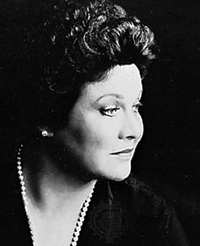
Maria Callas
An American mezzo-soprano with a beautifully smooth tone, Marilyn Horne made a name for herself as a bel canto heroine, but felt equally at home with Bizet’s Carmen. The depth of her voice leant itself easily to Carmen’s tricky lower passages while her impressive control over speed and dynamics (the softness and loudness of the score) allowed her to breeze through Carmen’s complicated gypsy melodies. Today, Horne works as an advocate for young singers.
Mad Murderesses
These women are all guilty of murder in one way or another. But don’t worry—the guys they kill usually deserve it. These gals aren’t evil, just misunderstood.
Lucia

Opera: Lucia di Lammermoor by Gaetano Donizetti
Voice: Soprano
You may want to keep this girl away from sharp objects. Lucia is the ultimate coloratura diva, which is to say her music often moves very quickly up and down the scale, and that her strength lies in her brilliant high notes. This constant motion in her vocal line is a direct reflection of the fact that her character is, well, a bit nuts.
Lucia di Lammermoor (based on Walter Scott’s novel The Bride of Lammermoor) tells the tragic tale of a young Scottish woman who falls in love with her brother’s arch nemesis, but is forced to marry a more acceptable suitor of her brother’s choosing. On her wedding night, Lucia, crazed by the loss of her true love, stabs her husband to death. She is then given the most famous “mad scene” in all of opera––staggering through a fifteen minute variation on the bel canto cavatina in her bloodied bridal gown. Over the course of the scene, she repeats phrases from earlier in the opera, as if her mind has taken her back to another place and time. The aria also includes melodies that alternately rise and fall, taking Lucia from the very bottom to the very top of her vocal range and back again. Let’s face it: If you’re going to play a crazy woman in an opera, you’d better be prepared to sing crazy. Lucia’s seemingly superhuman vocal feats make her one of opera’s favorite showstoppers.
A Lucia to Know: Joan Sutherland
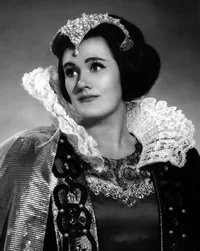
Maria Callas
Born in Australia, Dame Joan Sutherland––the artist known to audiences as “La Stupenda” (“the stupendous one”)––was an undisputed master of coloratura repertoire. Her sparkling high notes and remarkable vocal agility made her the standout Lucia of her generation, and her many performances and recordings opposite superstar Luciano Pavarotti have helped secure her place as one of opera’s most beloved prima donnas.
Tosca
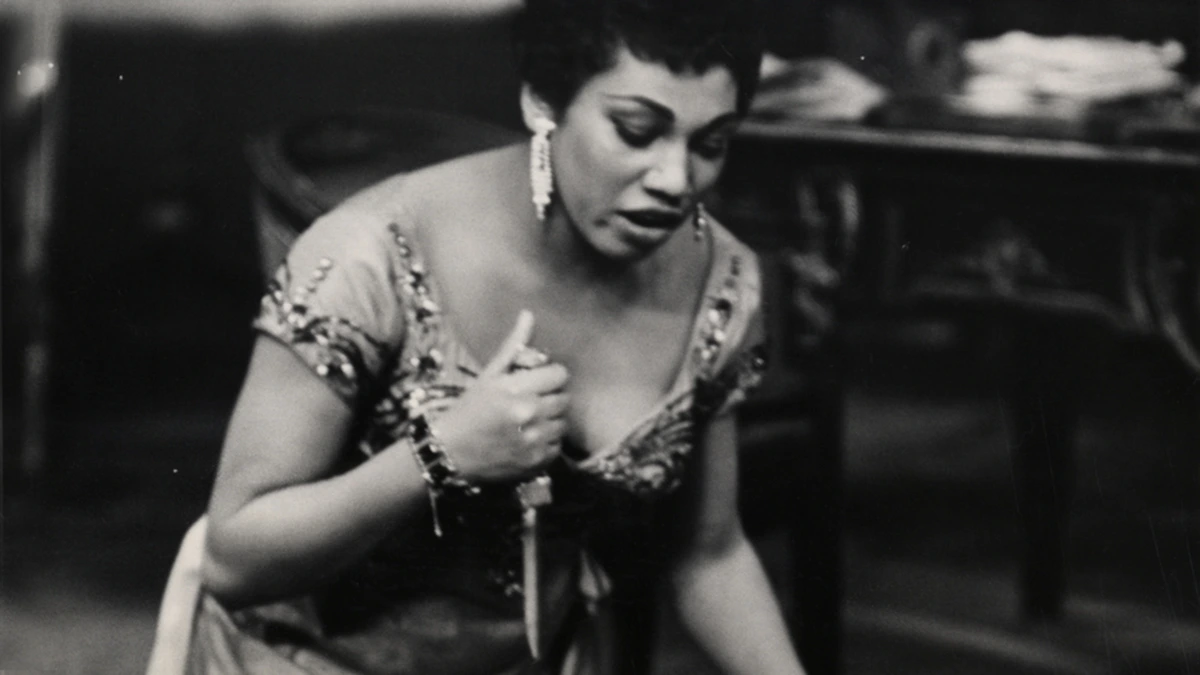
Opera: Tosca by Giacomo Puccini
Voice: Soprano
Here’s another gal you might want to keep away from sharp things. And dangerous heights. Tosca is one of opera’s most beloved murderesses; an opera diva within an opera (that’s right, her character is a singer!) who falls madly in love with a painter only to discover that his revolutionary tendencies make them both a target for the police. Once her boyfriend is captured and threatened with execution, Tosca is offered a bargain by the chief of police––her lover’s life in exchange for her affection. Tosca agrees, but then kills the police chief instead, stabbing him and exclaiming, “Questo è il baccio di Tosca!” (“This is what a kiss from Tosca feels like!”). Later, after losing her true love due to a tragic misunderstanding, Tosca leaps off a building, shouting that her sins will be judged before God.
Needless to say, Tosca’s kind of a drama queen. And her music is just as intense as she is. High C’s are nothing for this soprano, as much of her emotional outbursts are reflected in ear-piercing screams at the very top of her vocal register. Tosca also knows how to stretch her voice to its lower limits—often sneering through phrases so low they sound as if they’ve been spoken rather than sung. Throw in a few tricky rhythms (Tosca occasionally has to sing in groups of three beats while the orchestra is playing in groups of two), a couple of gorgeous melodies (her famous aria, “Vissi d’arte,” contains one of opera’s catchiest tunes), and you have one of the most challenging and most coveted roles in all of opera. Brava, Tosca!
A Tosca to Know: Leontyne Price
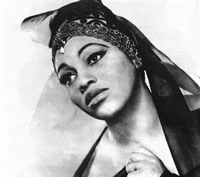
Maria Callas
Inspired at age nine by a performance of Marian Anderson’s, Mississippi native Leontyne Price became a great diva in her own right and had the honor of starring in the first production at the new Metropolitan Opera House in Lincoln Center in 1966. Her lush voice––equal parts “husky” and silky––and her commanding stage presence were perfect for Tosca, and the role was among the most celebrated and famous of her career. Price’s rendition of Tosca’s “Vissi d’arte” is an operatic essential––an effortless blend of drama and technique, and really loud in all the right places.
Salome
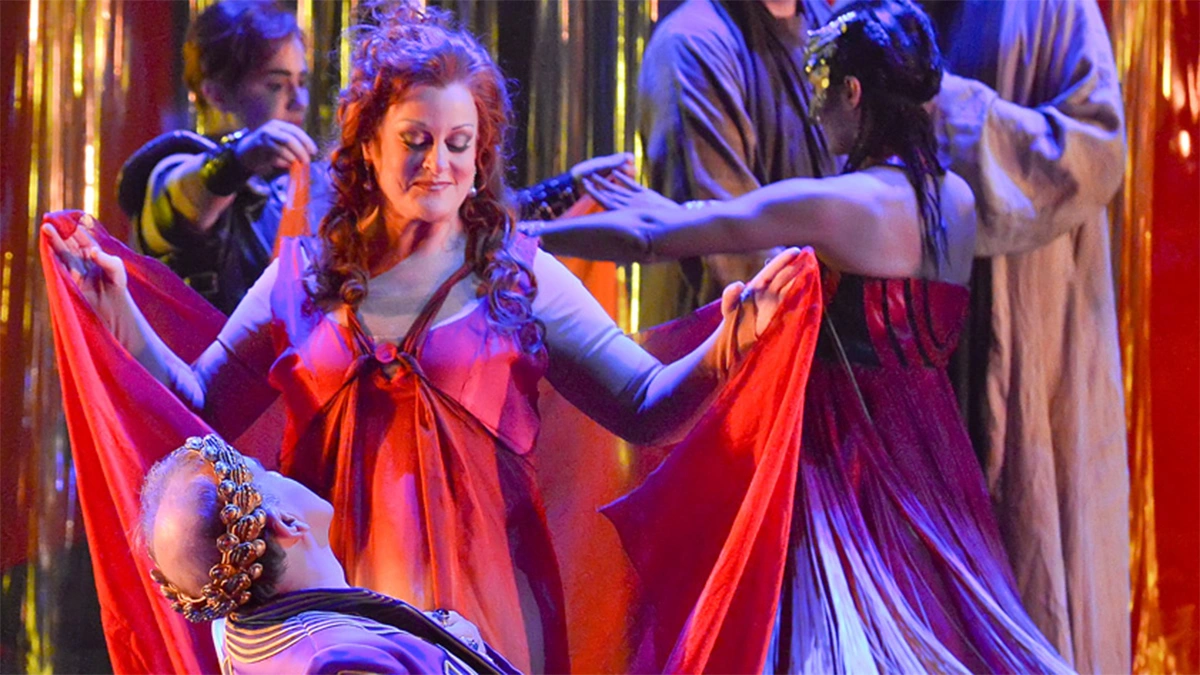
Opera: Salome by Richard Strauss
Voice: Soprano
Hold on to your heads. No, seriously. When this soprano gets going, heads literally start to roll. Her familiar story, adapted from a play by Oscar Wilde, follows the young princess’ infatuation with the religious prophet Jochanaan, who is disgusted by her decadent and unholy lifestyle and rejects her romantic advances. By way of revenge, Salome orders her stepfather, King Herod, to murder Jochanaan and present her with his head. Herod agrees, but asks Salome to dance for him in return.
Despite the obvious difficulty of needing to dance and sing, the soprano who tackles Salome faces several vocal challenges. Unlike Dalila, this biblical character’s strength of will manifests itself in an extremely high rather than an extremely low range. Much of her tessitura (tes-see-TOO-rah) (that is, the average span of her notes) sits between E and A at the top of the staff. That’s rough going, even for the most seasoned soprano. And Strauss’ music isn’t a walk in the park either.
Since the opera is very faithful to the play, Salome has no specific arias, but rather “recites” her lines against an orchestral background (this is Strauss’ variation on an old operatic trick known as recitativo accompagnato (reh-chee-tah-TEE-voh ah-kom-pah-NYAH-toh), in which characters sing short phrases with musical accompaniment in order to move the action along). As a result, Salome is obliged to follow some complicated rhythmic patterns that are meant to mirror the spoken word. Plus, her music uses a lot of chromatics, or subtle half-step shifts from note to note. With all of these techniques in play, it’s a wonder any soprano playing Salome is able to keep her head on straight.
A Salome to Know: Deborah Voigt
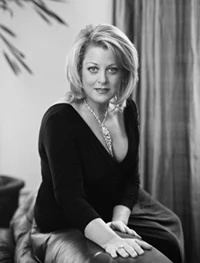
Maria Callas
With a shimmering and full-bodied voice, it’s no surprise that American soprano Deborah Voigt is a celebrated Strauss heroine. Her immense vocal strength allows her to navigate easily through Salome, a role that requires a lot of sustained high notes and a considerable amount of volume. An international star who frequently performs at the Kennedy Center, Voigt is as comfortable singing Strauss and Wagner as she is on the musical theater and concert stage.
Writer
Eleni Hagen
Editor
Lisa Resnick
Producer
Kenny Neal
Updated
Sources
Christiansen, Rupert. Prima Donna: A History. New York: Viking Penguin Inc., 1985. Cross, Milton. Complete Stories of the Great Operas. New York: Double Day, 1948. Fleming, Renée. The Inner Voice: The Making of a Singer. New York: Viking, Penguin Group, 2004. Keiler, Allan. Marian Anderson: A Singer's Journey. New York: Scribner, 2000.
Works Cited
Christiansen, Rupert. Prima Donna: A History. New York: Viking Penguin Inc., 1985. Fleming, Renée. The Inner Voice: The Making of a Singer. New York: Viking, Penguin Group, 2004.
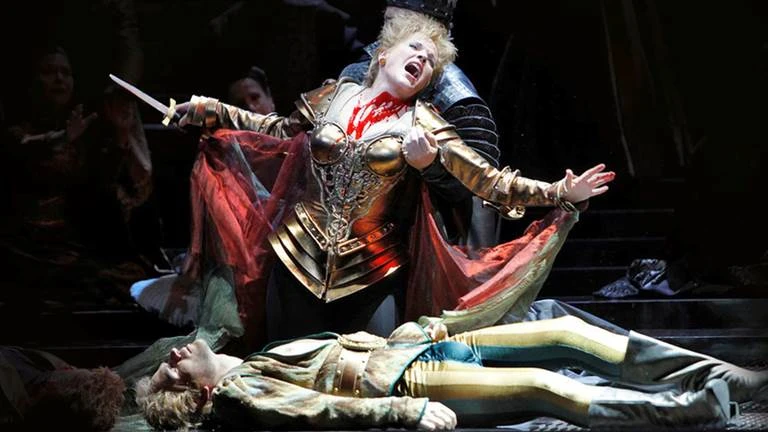
Kennedy Center Education Digital Learning
Eric Friedman
Director, Digital Learning
Kenny Neal
Manager, Digital Education Resources
Tiffany A. Bryant
Manager, Operations and Audience Engagement
Joanna McKee
Program Coordinator, Digital Learning
JoDee Scissors
Content Specialist, Digital Learning
Generous support for educational programs at the Kennedy Center is provided by the U.S. Department of Education. The content of these programs may have been developed under a grant from the U.S. Department of Education but does not necessarily represent the policy of the U.S. Department of Education. You should not assume endorsement by the federal government.
Gifts and grants to educational programs at the Kennedy Center are provided by A. James & Alice B. Clark Foundation; Annenberg Foundation; the Andrew W. Mellon Foundation; Bank of America; Bender Foundation, Inc.; Carter and Melissa Cafritz Trust; Carnegie Corporation of New York; DC Commission on the Arts and Humanities; Estée Lauder; Exelon; Flocabulary; Harman Family Foundation; The Hearst Foundations; the Herb Alpert Foundation; the Howard and Geraldine Polinger Family Foundation; William R. Kenan, Jr. Charitable Trust; the Kimsey Endowment; The King-White Family Foundation and Dr. J. Douglas White; Laird Norton Family Foundation; Little Kids Rock; Lois and Richard England Family Foundation; Dr. Gary Mather and Ms. Christina Co Mather; Dr. Gerald and Paula McNichols Foundation; The Morningstar Foundation;
The Morris and Gwendolyn Cafritz Foundation; Music Theatre International; Myra and Leura Younker Endowment Fund; the National Endowment for the Arts; Newman’s Own Foundation; Nordstrom; Park Foundation, Inc.; Paul M. Angell Family Foundation; The Irene Pollin Audience Development and Community Engagement Initiatives; Prince Charitable Trusts; Soundtrap; The Harold and Mimi Steinberg Charitable Trust; Rosemary Kennedy Education Fund; The Embassy of the United Arab Emirates; UnitedHealth Group; The Victory Foundation; The Volgenau Foundation; Volkswagen Group of America; Dennis & Phyllis Washington; and Wells Fargo. Additional support is provided by the National Committee for the Performing Arts.
Social perspectives and language used to describe diverse cultures, identities, experiences, and historical context or significance may have changed since this resource was produced. Kennedy Center Education is committed to reviewing and updating our content to address these changes. If you have specific feedback, recommendations, or concerns, please contact us at digitallearning@kennedy-center.org.
Like this project
Posted Apr 17, 2024
A beginner’s guide to some of opera’s most challenging female roles and a unique look at how opera does girl power.
Likes
0
Views
13


